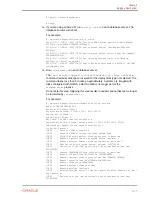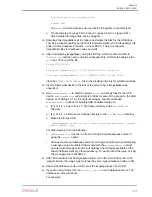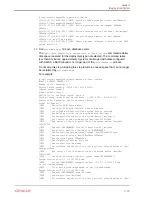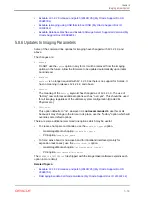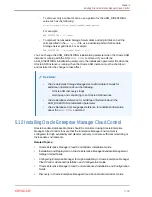
See Also:
5.10 Adding Additional Elastic Nodes to an Existing Rack
You can add nodes to an existing rack using elastic configuration.
The elastic configuration procedure described in "
Configuration of Oracle Exadata Database Machine
(page 5-85)" can also be used to
add new servers to an existing rack. The new servers and existing servers must be at
least X5. The procedure assigns IP addresses to the new database servers and cells,
in preparation for adding them into existing setups. The addition of X5, X6, or X7
servers into previous generation racks using this methodology is not supported.
The XML configuration file generated by the Oracle Exadata Deployment Assistant
must contain the existing nodes, plus the new nodes to be added. The same elastic
configuration procedures described in the previous section should be followed, and the
applyElasticConfig.sh
script that runs as part of step
(page 5-88) determines which
nodes are new, and assigns IP addresses accordingly.
When adding only storage cells, you can run the
applyElasticConfig.sh
script from a
cell server rather than a database server.
5.11 Loading the Configuration Information and Installing the
Software
Oracle Exadata Deployment Assistant loads the network settings, creates the user
accounts, installs Oracle Database software, and secures the system based on the
information the configuration files. You can also choose to do the process manually.
Note:
•
To enable a supported, non-English language, set the following
environment variables before starting the configuration:
export LANG=preferred_language
export LC_ALL=preferred_language
•
To copy the database image to a USB drive, use the procedure in the
database maintenance chapter of Oracle Exadata Database Machine
Maintenance Guide For releases 12.1.2.1.0 and later, the system used to
create the image must be running Oracle Linux 6.
Chapter 5
Adding Additional Elastic Nodes to an Existing Rack
5-90


